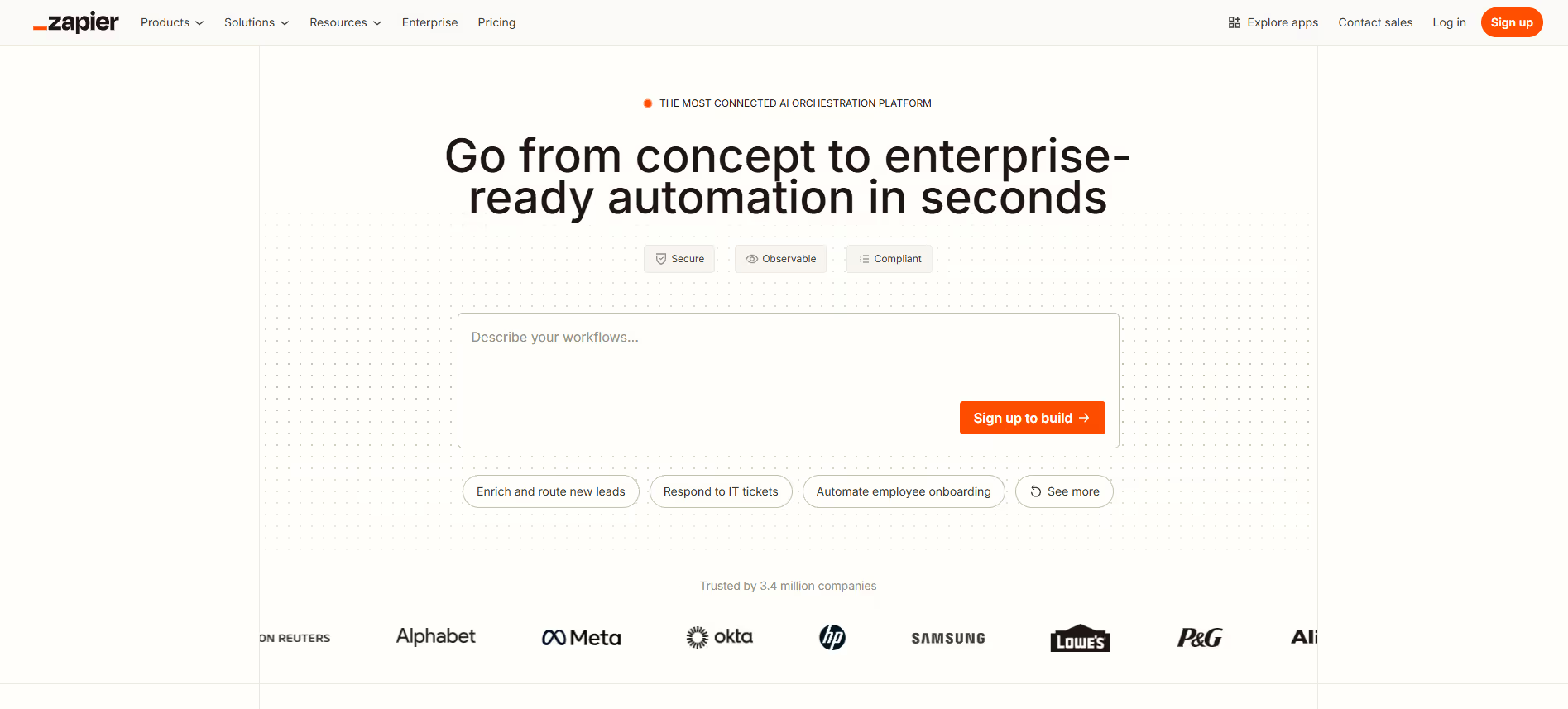Tool Insights
Home > Tools > Tool Details
Zapier
Description
Zapier is a leading online automation tool that connects thousands of web applications, allowing users to automate repetitive tasks and create seamless workflows.
Zapier provides a powerful no-code platform for integrating various web applications. Users can build 'Zaps'—automated workflows consisting of a trigger (an event in one app) and one or more actions (tasks performed in other apps). This capability streamlines operations, enhances productivity, and ensures data consistency across disparate systems, making complex multi-app processes manageable for individuals and teams alike.
Key Applications
- Sales & Marketing Automation: Automatically add new leads from forms to CRM, send personalized follow-up emails, or post social media updates based on content publication.
- Data Synchronization: Keep contact lists, project tasks, and customer information synchronized across multiple platforms like CRM, email marketing, and project management tools.
- Operations & Productivity: Automate administrative tasks such as moving files between cloud storage, sending notifications for new calendar events, or creating tasks from incoming emails.
- Customer Support Efficiency: Log support tickets from various channels into a central helpdesk, notify relevant teams of urgent issues, or update customer records post-resolution.
Who It’s For
Zapier is ideal for small to large businesses, marketing professionals, sales teams, operations managers, customer support agents, and anyone looking to automate routine digital tasks without needing programming skills. It's particularly valuable for organizations relying on multiple SaaS applications that need to interact.
Pros & Cons
How It Compares
- Versus Make (formerly Integromat): While both offer powerful automation, Zapier is generally considered more user-friendly with a simpler interface, making it easier for beginners. Make offers more complex multi-step scenarios, conditional logic, and routing options, often making it more cost-effective for high-volume, intricate workflows.
- Versus IFTTT: IFTTT (If This Then That) typically focuses on simpler, more consumer-oriented applets and smart home integrations. Zapier is designed for professional and business use, offering far more integrations, advanced logic, and robust task management capabilities suitable for complex organizational workflows.
Bullet Point Features
- Thousands of App Integrations: Connects with over 5,000 popular web applications.
- No-Code Workflow Builder: Intuitive interface for creating automated workflows (Zaps) without coding.
- Multi-Step Zaps: Create complex workflows with multiple actions and conditional logic.
- Built-in Apps: Includes utilities for data formatting, delays, filters, and scheduling.
- Task History & Monitoring: Detailed logs of all executed tasks for troubleshooting and oversight.
- Webhooks: Connect to virtually any application with a public API using webhooks.

#Automation #Integrations #Workflows
Freemium
Marketing Automation
Productivity & Collaboration
Disclosure
All product names, logos and brands are property of their respective owners. Use is for educational and informational purposes only and does not imply endorsement. Links are to third-party sites not affiliated with Barndoor AI. Please see our Terms & Conditions for additional information.


.avif)




